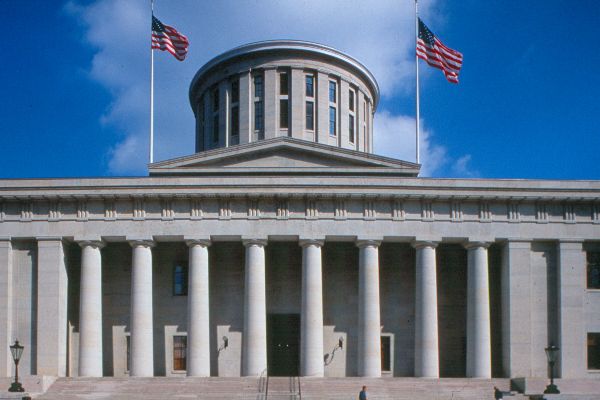Republicans Criticized For Redistricting In Ohio

Although battleground Ohio went to President Obama by roughly 2 percentage points in the general election, Republicans secured spots in the US House of Representatives with an overwhelming majority. The state’s Republican administration is being widely criticized for, what some are calling, exploiting the redistricting process to get there.
In twelve of the state’s sixteen districts, or three-quarters of Ohio’s representation in the House, Republicans won in apparent landslides, with Democrats winning their districts by suspiciously impressive numbers as well.
This has led many to accuse the state’s administration of "packing." Packing is a process by which district lines are drawn to include certain demographic blocs who tend to vote one way or another. This practice limits the population's voting power elsewhere, although districts should be drawn to reflect a state's ethnic, racial, and social landscape.
For example, the most recent redistricting, completed in 2011, considers Lakewood, Ohio, a primarily suburban metropolitan city near Cleveland, and Toledo, Ohio, an industrial city affected greatly by the auto bailout, to be comparable enough in demographics that they are included in the same district. It is worth noting the two are over 100 miles away from one another.
In 2010, Ohio had thirteen Republican and five Democratic Congress members, but two seats were eliminated after Ohio's population numbers lost ground to growing sun belt states in the south.
The new 9th District forced two Democratic representatives, Marcy Kaptur and Dennis Kucinich, to square-off in the primary.
A report released last year by the Ohio Campaign for Accountable Redistricting suggested that an executive director for Team Boehner, the Speaker of the House John Boehner’s political faction, was extremely active in the redistricting process.
Jim Slagle, manager of the Ohio Campaign for Accountable Redistricting, a coalition of liberal organizations said, not only was Boehner’s campaign trying to influence redistricting in Ohio, but the campaign was also trying to keep it from the public:
"There is no question that with the congressional maps that Speaker John Boehner's team was driving this process...We've documented that in the emails that were exchanged."
Mike Dittoe, spokesman for Ohio House Speaker William Batchelder, said the allegations were “deliberately and maliciously salacious in order to garner headlines."
The current redistricting process is bedraggled, but popular opinion suggests that Ohioans are not disgruntled enough with the current process to reform it right away. Issue 2, a constitutional amendment that would have created a 12-member citizen commission to redraw Ohio’s political districts, was soundly defeated by a 64-36 percent margin on November 6.
Since 1967, Ohio's state legislative lines have been drawn by a five-member politician commission comprised of the governor, auditor, secretary of state (all of whom are currently Republican), one commissioner chosen by the Speaker of the House, and another chosen by the House minority leader.
Though the process for drawing congressional districts is strict, state and local legislative districts are more flexible. According to state law, legislators must keep population numbers per district within ten percent of one another. If there is a “compelling reason” for a larger population gap, however, it can be considered on a case by case basis.
For a comprehensive look at Ohio's political districts, click here.




